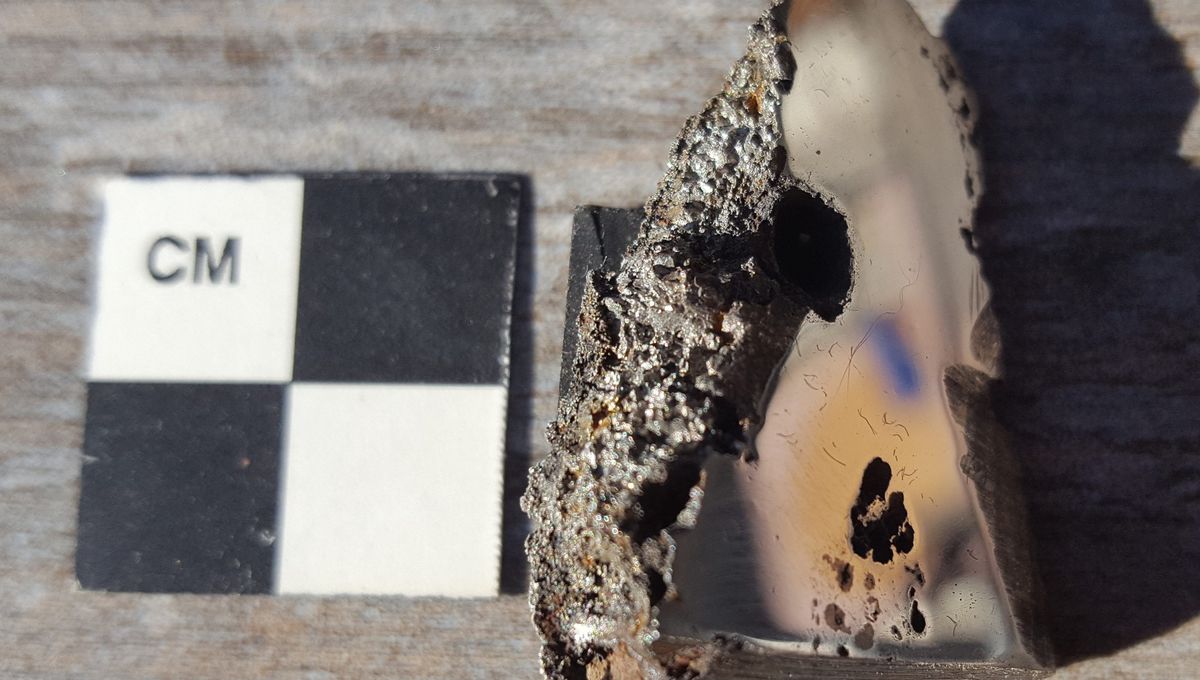
A space rock found in Somalia has been found to contain at least two minerals not found before in nature and only previously known to have been produced artificially. It’s not quite the asteroid that gave Wakanda its vibranium, but for geologists, it might be even better. Since these discoveries were made using a single 70-gram (2.5-ounce) sample, we may have barely scratched the surface of what the rock has to offer.
The presence of water and oxygen on Earth create more ways in which elements can come together to create minerals. As a result, the number we have found originating on Earth dwarfs those known to have formed in space. Nevertheless, meteorites maintain their capacity to surprise us, and the El Ali meteorite, discovered near the town of El Ali in the Hiiraan region of Somalia, is certainly doing that.
“Whenever you find a new mineral, it means that the actual geological conditions, the chemistry of the rock, was different than what’s been found before,” said Professor Chris Herd, who presented the findings at the University of Alberta’s Space Exploration Symposium last year.
The meteorite – the ninth largest ever found – is an “Iron, IAB meteorite”, of which more than 350 are known. Consequently, Herd was particularly surprised to see something unfamiliar when examining a slice of it.
Herd asked his colleague Dr Andrew Locock to see what was going on. “The very first day he did some analysis he said, ‘You’ve got at least two new minerals in there,” Herd said.
Herd called the novel minerals elaliite and elkinstantonite after the meteorite and Professor Lindy Elkins-Tanton, respectively. Besides being vice president of the Interplanetary Initiative at Arizona State University, Elkins-Tanton is principle investigator of NASA’s Psyche mission to explore the large metal-rich asteroid that is set for launch in October 2023.
The fact both elaliite and elkinstantonite had been produced in laboratories meant Locock was able to verify their presence relatively easily. Artificial substances don’t have the same naming process as those found in nature, so Herd’s names have been accepted.
Locock has experience with identifying new minerals, but Herd said his expertise lies in working out the history of an asteroid based on its composition. Finding new minerals scrambles that, and it will take a while both to work out how the meteorite’s parent body formed, and why we haven’t seen these minerals elsewhere.
Humans have been putting meteorite material to use at least since Tutankhamun had a dagger forged from the iron/nickel/cobalt in one. Herd hopes elaliite, elkinstantonite, or other minerals found in the El Ali meteorite will eventually prove of practical value.
Although the Meteoritical Bulletin Database lists the 17-ton El Ali meteorite as having been found in 2020, that is only when the wider world became aware of it. Locals told researchers the stone was known as “Nightfall” in the folklore of the Saar people, indicating its landing had been observed. It had been celebrated in songs, poems, and dances for at least five generations and used for knife sharpening. The meteorite is almost 90 percent iron and nickel and is among the largest ever found.
An earlier version of this article was published in November 2022.
Source Link: Two New Minerals Never Seen Before On Earth Extracted From Huge Meteorite